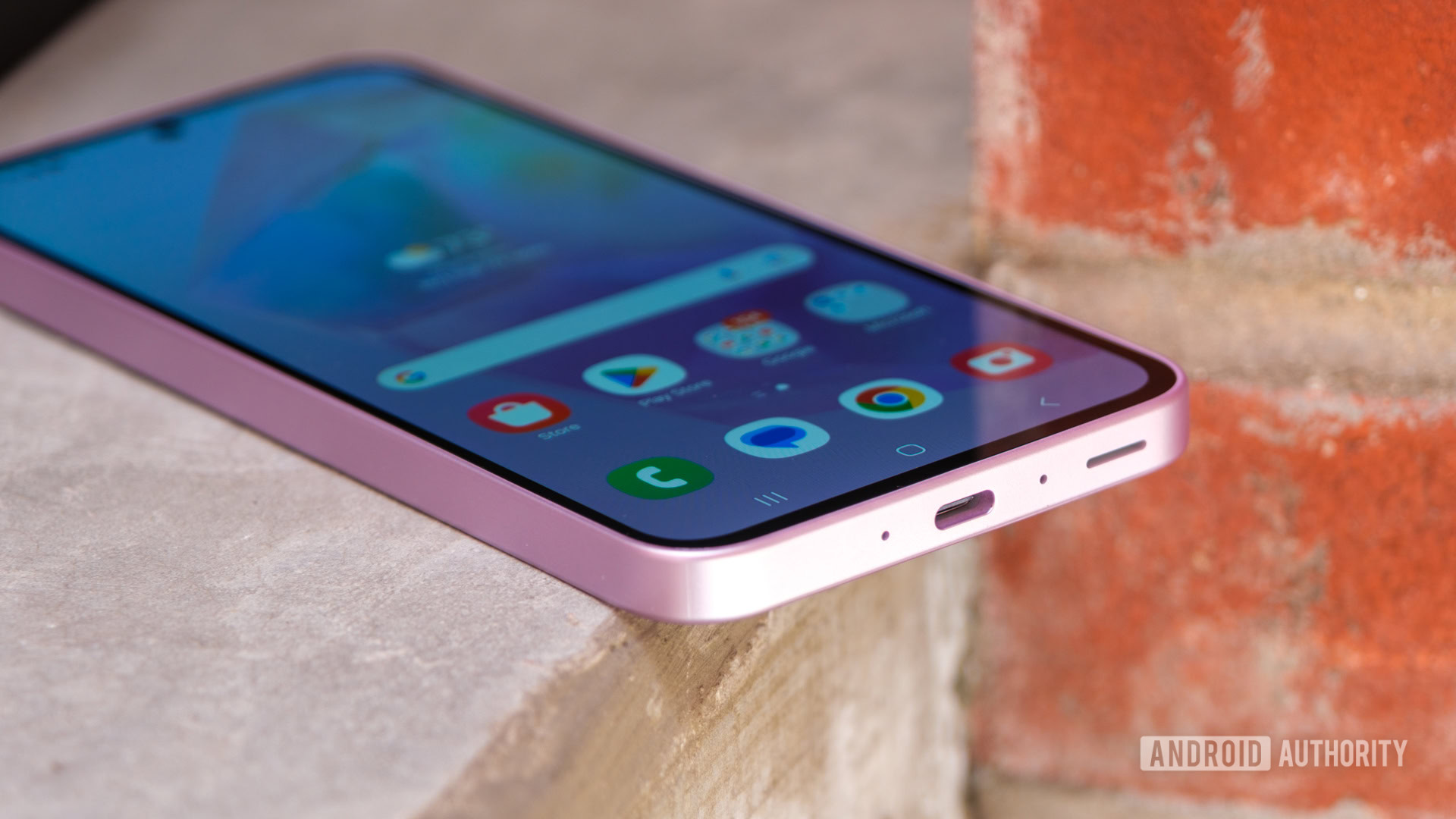Affiliate links on Android Authority may earn us a commission. Learn more.
How to clean a USB-C port
Published onDecember 16, 2024
Though you can protect the USB-C ports on many devices with the right case, a removable plug, or even just a piece of tape, you’ll inevitably have to clean the port at some point. It’s easy for debris to get trapped in such a small space, especially for a phone in a lint-filled pocket. Here’s how to clean any USB-C port in a minute or two, and what to avoid in the process.
QUICK ANSWER
- Blow air into the port to clear out loose debris. You'll probably want to use a can of compressed air.
- If you still suspect there's debris in there, find a toothpick, toothbrush, or similar object small enough to get into the port that isn't metal, sharp, or fuzzy.
- Insert the cleaning tool from step 2, gently working around the sides. Try to avoid the USB connector prong.
- Use another blast of air to force out loosened debris.
JUMP TO KEY SECTIONS
How to clean a USB-C port
The main principle here is to be careful. We’ll go into that more in the next section, but if you damage the electronics in a USB-C port, the connection might stop working. You might even short out the device as a whole, although that’s unlikely.
Follow this checklist:
- First, blow air into the port to clear out loose debris. If you’re lucky this may be the only step involved, but you’ll probably want a can of compressed air. Aim the included nozzle straw directly into the port and use one-second bursts. Be sure to hold the can itself perfectly vertical, since angling it could potentially spray liquids. If you don’t have compressed air, an air bulb may be enough.
- If you still suspect there’s debris in the port, find a toothpick, a toothbrush, a disposable dental pick, or a similar object small enough to get into the port that isn’t metal, sharp, or fuzzy. In the case of a wooden toothpick, you may need to file it down for size reasons.
- Insert the cleaning tool from step 2, gently working around the sides. Try to avoid the actual USB connector prong.
- Use another blast of air to force out any newly loosened debris.
- If there’s still material in the port, repeat steps 2 through 4.
What you should avoid when cleaning your USB-C port

At least some of these points may seem obvious, but keep them in mind.
- Avoid jamming anything straight back into the port. That’s where the connector prong is located, and doing so could bend the prong or scratch power/data contacts.
- Don’t use a cotton swab/Q-Tip. It’s probably too big for a USB-C port anyway, but the bigger threat is that you’ll leave cotton behind, swapping one kind of debris for another.
- Don’t use metal objects. These are more likely to damage electronics, and in a worst-case scenario, could actually cause a short and wreck the entire device.
- Likewise, avoid sharp objects.
- Avoid getting liquids into the port, whether from a compressed air can or something else. If this does happen, make sure the device is powered down and allowed to dry. You can use cool air to speed things up, but not a hot-air dryer.